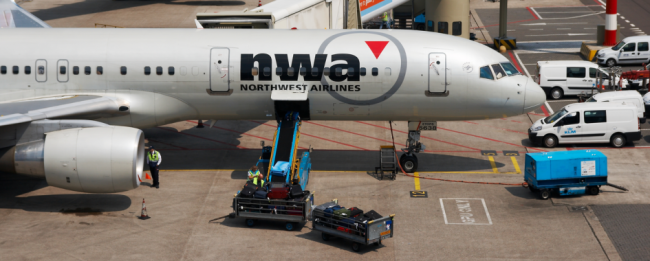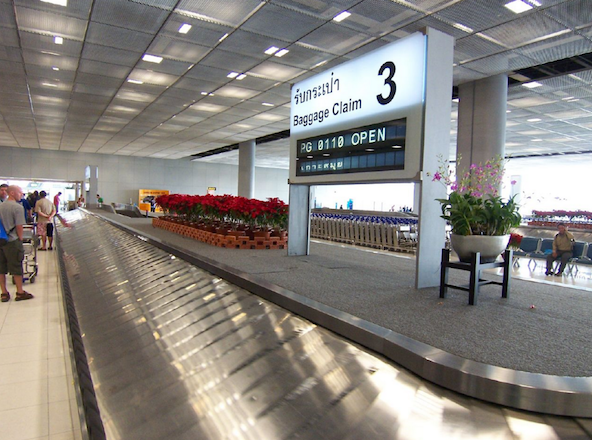Ever wondered what happens to your precious luggage after you bid your farewells at the ticket counter? I have imagined many scenarios and in some instances see the evidence of those assumptions once I retrieve my battered baggage. This Hipmunk article which originally appeared on The Tailwind blog pulls the curtain on your luggage’s journey.
As you queue up in security with a carry-on and contemplate the trip ahead, your checked luggage is embarking on a journey of its own.
Thanks to Amsterdam’s Airport Schiphol, you can now witness this voyage from the comfort of your own home. The airport recently released behind-the-scenes footage that reveals exactly what happens to bags after you hand them over at check-in and hope for the best. Check out the 360-degree video here.
While practices vary by country and airport, here’s a breakdown of the process as it’s commonly implemented in the U.S.:
- After you leave a bag at check-in, it’s scanned by a laser barcode reader that transmits the bag’s tag number to a computer, which also keeps track of the bag’s destination. The bag is then sent off along a labyrinthine system of conveyor belts.
- Once it reaches the main luggage facility, the bag is screened by security. If security administrators have any concerns about a bag, they’ll open it to scope things out (If a bag is opened, the TSA will leave a note inside stating as much).
- If the bag makes it through security, the computer communicates with the baggage conveyor system to direct the bag to the right airline.
- Once the bag has reached its stop, a baggage handler removes it from the conveyor belt and loads it onto a cart along with the luggage of your fellow travelers. Baggage handlers then drive the cart to the plane and load the luggage onto the aircraft.
When a Bag Goes Missing
While missing luggage is at the top of the list of travel nightmares, the good news is that statistically, it’s very rare: There’s only a 1 percent chance your bag won’t arrive at a destination along with you.
What unfortunate circumstances must align for the worst to happen? The explanation could lie with any of a number of factors:
- Needing to be unloaded and transferred to a connecting flight in one hour or less.
- High volume of luggage, which ups the chances of things going wrong.
- Slipping off the conveyor belt or into the wrong chute (This is more likely to happen when bags are placed on the conveyor wheels-down).
- Human error. If the check-in clerk inaccurately labels the destination code, your bag doesn’t stand a chance. Likewise, the bag may get loaded onto the wrong wagon (and therefore the wrong plane).
- Having multiple connections. The more often a bag needs to be unloaded, redirected, and loaded onto a new plane, the higher the chances of things going awry.
How to Decrease the Odds of a Bag Getting Lost
While you may not be able to control everything that happens to a bag after check-in, take these steps to up the chances of luggage finding its way back to you:
- Clearly label the bag with your name, address, and destination—both inside and out. Also apply some kind of visual identifier to the outside of the bag so it’s easy to describe to agents if it goes missing. Even better? Take a picture of the bag, including its ID tag and barcode, before it rolls off down the conveyor.
- Get to the airport on time. Proper trip planning can help ensure there’s enough time between connections for bags to make it onto the plane along with you.
- Know the rules regarding prohibited items, TSA-approved locks, and the like—and then follow them.
- Tie up (or tuck in) all straps. Bag straps can get stuck in conveyors, creating delays in the sorting process (Depending on the length of said delays, this could mean that a bag won’t make it onto its flight).
- Keep the essentials on hand at all times. Don’t check anything you can’t live without. Stash prescriptions, valuables, electronics, money, and an extra change of clothes in your carry-on, just in case. Be sure to follow all regulations so you don’t spend a ton of time in security.
If nothing else, perhaps learning about the wild adventures of checked luggage will make us all a little more grateful for the human way of flying. While babies may cry and people may recline their seats into your lap, it still beats sitting in the cargo hold.



Thanks for your post. Labeling bags is important. When coming back from a trip from China over the summer one of my wife’s bags went missing. We went to the help desk, and thank goodness the bags were properly labeled. The attendant found our bags easily and they were able to ship them to us. I was really grateful that I, and the airport had clearly labeled my bag.